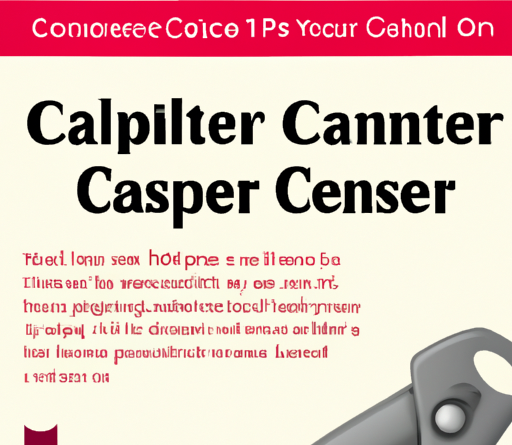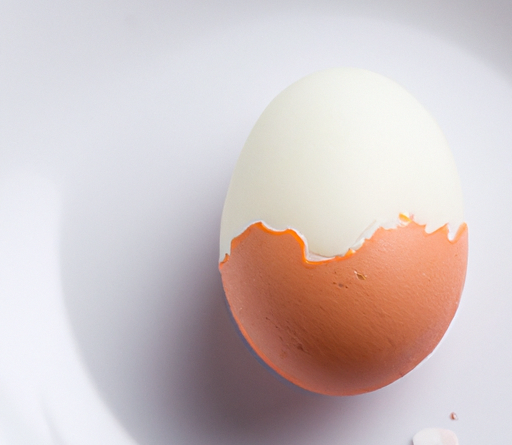
Have you ever found yourself staring at a can opener, feeling completely puzzled about how to use it? Don’t worry, you’re not alone! Many people struggle with this handy little tool, but once you know the right technique, it becomes a breeze. In this article, we’ll walk you through the steps of using a can opener, so you can save yourself from any future can-opening frustrations.
Using a can opener may seem like a simple task, but if you’re not familiar with the right method, it can be quite confusing. The first thing you need to do is make sure you have a good quality can opener. There are various types available, including manual and electric ones, so choose the one that suits your needs. Once you have your can opener ready, place the can on a stable surface and hold it firmly with one hand. With your other hand, position the can opener’s blade at the top of the can, on the edge of the lid. Then, press the blade down gently to pierce through the lid. In the next paragraph, we’ll walk you through the remaining steps and provide more tips and tricks on how to use a can opener effectively. So, stay tuned to learn everything you need to know about using a can opener!
Table of Contents
How to Use a Can Opener
Opening cans can be a hassle without the right tool. A can opener is a simple yet indispensable gadget that allows you to access the contents of various canned goods effortlessly. Whether you’re a seasoned chef or a beginner in the kitchen, knowing how to use a can opener correctly is essential for safe and efficient food preparation. In this article, we will guide you through the process of using a can opener step by step, so you can enjoy hassle-free cooking and avoid any mishaps along the way.

Consider the Type of Can Opener
Before we delve into the specifics, it’s important to understand that there are different types of can openers available in the market. The two most common types are manual and electric can openers. Each has its own advantages and operating mechanisms, so choosing the right one for your needs is crucial.
Manual can openers are simple to use and require minimal effort. They usually consist of two arms and a cutting wheel. On the other hand, electric can openers operate with the push of a button, making them ideal for people with limited hand strength or those who open cans frequently. Consider your preferences and needs, and select the type of can opener that suits you best.
Check for Quality and Durability
Before making a purchase, it’s essential to assess the quality and durability of the can opener. A good can opener should be made of sturdy materials such as stainless steel or high-quality plastic, ensuring its longevity and resistance to wear and tear. Invest in a reliable brand known for producing quality kitchen tools to ensure you get a can opener that will last.
Look for Safety Features
Safety should be a top priority when using a can opener. Look for safety features such as smooth, ergonomic handles that provide a comfortable grip and minimize the risk of accidents. Some can openers also include built-in magnet lifts, which can help securely hold the lid once removed and prevent it from falling into the can. Check for these safety features when choosing a can opener to ensure a worry-free cooking experience.
Preparing the Can
Before opening a can, it’s vital to prepare it properly to avoid any mishaps or contamination. Follow these steps to ensure you are ready to open your can safely and hygienically.
Inspect the Can for Damage
Inspect the can for any damage or irregularities before proceeding. If the can is dented, bulging, or shows signs of leakage, it may be compromised and could pose a health risk. It’s best to discard such cans to prevent any potential foodborne illnesses.
Clean the Can
Before opening the can, it’s essential to clean the exterior surface thoroughly. Wipe away any dirt or debris using a clean cloth or a damp paper towel. This step helps prevent any external contaminants from entering the can’s contents during the opening process.
Position the Can Correctly
To ensure stability and ease of opening, position the can on a flat surface such as a countertop or table. Ensure it is centered and secure to minimize any movement while using the can opener. This step is especially important when using a manual can opener, as stability is key to reducing the risk of accidents.

Using a Manual Can Opener
Using a manual can opener requires a bit more effort than its electric counterpart, but it can be just as effective if done correctly. Follow these steps to open a can using a manual can opener.
Hold the Can Steady
Hold the can steady with one hand while gripping it firmly to prevent any movement during the opening process. This will increase stability and minimize the risk of accidents.
Position the Opener on the Can Lid
Position the cutting wheel of the can opener on the edge of the can’s lid. Ensure that the wheel is aligned with the rim and centered as much as possible. This step is crucial, as an improper alignment may result in an uneven or incomplete cut.
Apply Pressure and Rotate the Opener
Once the opener is positioned correctly, apply steady pressure downwards while simultaneously rotating the can opener around the rim of the can. The cutting wheel should puncture the lid, allowing you to move smoothly along the edge. Continue rotating until you make a full circle around the can.
Using an Electric Can Opener
If you prefer a more effortless and time-saving option, an electric can opener is your best bet. Follow these steps to safely and efficiently use an electric can opener.
Place the Can on the Opener
Place the can on the designated platform or rest of the electric can opener. Ensure that it is centered and well-balanced to prevent any accidental spills or movements during the opening process.
Align the Can with the Cutting Mechanism
Ensure that the can is aligned properly with the cutting mechanism of the electric can opener. This usually involves holding the can in place while the cutting tool automatically positions itself to puncture the lid. Double-check the alignment to ensure a smooth and even cut.
Activate the Opener
Once the can is properly aligned, activate the opener by pressing the button or lever designated for this purpose. The electric opener will start operating, moving the cutting mechanism along the edge of the can’s lid. Wait for the opener to complete the rotation and release the lid.
Opening the Can Safely
Once the can has been successfully opened, there are a few precautions to keep in mind to ensure your safety and the preservation of the contents.
Be Cautious of Sharp Edges
When handling the opened can, be cautious of any sharp edges that may have been created during the opening process. Run your finger along the inside and outside edges to ensure there are no protruding or jagged areas that may cause injury. If you come across any sharp edges, use caution or smooth them out with a tool such as a can opener.
Avoid Contact with Exposed Contents
If the can’s contents are exposed after opening, exercise caution while handling them. Some canned goods, such as certain fruits or liquids, may have spilled onto the lid or around the rim. To avoid contamination or spilling, avoid touching the exposed contents directly and discard any contaminated food properly.
Removing the Lid
Once the can is opened and you’ve taken the necessary safety precautions, it’s time to remove the lid. Follow these steps for a safe and efficient removal process.
Discard the Lid
After opening the can, carefully remove the lid from the can with your hands or a pair of tongs. Dispose of it in a designated waste container or recycling bin. Avoid placing the lid on any surfaces where it could cause harm or damage.
Inspect the Can Contents
Before using the contents of the can, inspect them visually for any signs of spoilage or contamination. Look for discoloration, an off smell, or any other indicators that the food may have deteriorated. If you notice anything unusual, it’s best to discard the contents and not consume them.
Storing the Opened Can
If you have surplus contents in the can that you won’t be using immediately, follow these steps to store the opened can properly.
Transfer Contents to a Suitable Container
Once you’ve opened the can, transfer any remaining contents to a suitable airtight container. This will help maintain the freshness and quality of the food, preventing it from spoiling quickly. Choose a container that is clean and appropriately sized to avoid wasted space or unnecessary exposure to air.
Label and Date the Opened Can
To avoid confusion and ensure you use the contents in a timely manner, label the container with the name of the food and the date it was opened. This will help you keep track of expiration dates and prioritize the use of the opened can.
Store in a Cool and Dry Place
To prolong the shelf life of the opened can, store it in a cool and dry place away from direct sunlight. A pantry or cupboard is an ideal location. Ensure that the container is tightly sealed to prevent air and moisture from deteriorating the food’s quality.
Cleaning and Maintaining the Can Opener
Proper cleaning and maintenance of your can opener are crucial for its longevity and continued usability. Follow these steps regularly to keep your can opener in top shape.
Clean the Opener Regularly
After each use, clean your can opener thoroughly to remove any food particles or residue that may have accumulated. Use warm soapy water and a brush or sponge to scrub all the parts, including the blades or cutting wheel. Rinse it thoroughly to remove any soap residue and dry it before storing.
Remove Stuck Residue
If you come across any stubborn residue or stuck-on food, you may need to take extra measures to clean it. Use a toothpick or a brush with firm bristles to gently scrape away the debris. Avoid using harsh abrasives or metal utensils that could damage the can opener.
Lubricate Moving Parts (if applicable)
Some can openers may have moving parts that benefit from occasional lubrication. Check the manufacturer’s instructions or guidelines for your specific can opener model to determine whether lubrication is necessary. If required, apply a small amount of food-grade lubricant to ensure smooth operation.
Troubleshooting Common Issues
Even with proper care and usage, can openers may encounter some issues. Here are a few common problems and their potential solutions.
The Opener Cuts Unevenly
If the opener cuts unevenly, it may be due to a dull cutting wheel. Consider replacing the cutting wheel or sharpening it if possible. Alternatively, ensure that you maintain a steady grip and apply consistent pressure throughout the opening process.
The Opener Gets Jammed
If the opener gets jammed while in use, stop immediately and inspect the mechanism for any obstructions. Remove any food particles or debris that may be causing the jam. Ensure the cutting wheel moves freely and smoothly before attempting to open another can.
The Opener Doesn’t Grip the Can
If the opener doesn’t grip the can securely, first check if the can is positioned correctly. Adjust the can’s alignment to ensure proper engagement with the opener’s mechanism. If the issue persists, it may be a sign of a worn-out opener and it may be time to consider replacing it.
Conclusion
Knowing how to use a can opener correctly is an essential skill that can make your kitchen experience safer and more efficient. By considering the type of can opener, ensuring quality and durability, looking for safety features, preparing the can properly, and following the recommended steps for opening, removing, and storing its contents, you can enjoy hassle-free cooking and food preparation. Remember to clean and maintain your can opener regularly to ensure it remains in top shape. By following these guidelines, you can use a can opener with confidence, prolong its lifespan, and enhance your culinary endeavors. Happy cooking!







